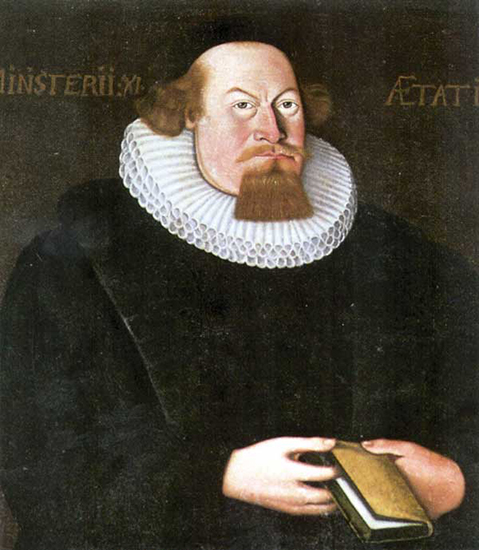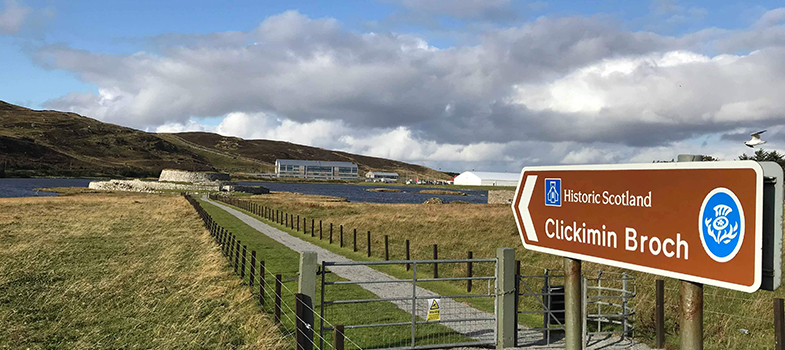16.2 Scots in Scandinavia
“Tae Noroway, tae Noroway, tae Noroway ower the faem”
These are the opening words of a letter sent to the famous sailor Sir Patrick Spens by his King. They stem from the poem Sir Patrick Spence, one of the most famous Child Ballads (Vol. 2, No. 58), whose author is unknown, and which many of us learned at school; it is part of a shared culture which linked Scotland and Scandinavia for centuries. Language played its part in these links, and from the historic Norse speaking areas of Scotland, like Shetland, Orkney and Caithness, to the early Lowland burghs – which had settlers from the former Danelaw in England – the Scots leid became thrang with Scandinavian elements.
In many cases, it is the Norse element which still marks major differences between Scots language and Standard English. For example kirk, kist, breeks, brig and rig for the English ‘church’, ‘chest’, ‘breeches’, ‘bridge’ and ‘ridge’; lowp for ‘leap’, ain for ‘own’, strae for ‘straw’, skirl for ‘shrill’, mask for ‘mash’. Many of the Scandinavian words are still in everyday use in Scotland, having died out of the English dialects, which originally absorbed them – these are words such as to flit (to move house), graith (tools or equipment), frae (from), lug (ear), nieve (fist), and hoast (cough).
This shared cultural and linguistic inheritance of course worked both ways and the Scots in turn migrated to Scandinavia, especially between the 16th and 18th centuries. The Scots dominated the Norwegian timber trade of the 16th and 17th centuries to such an extent that the trade was called the skottehandelen or Scotch trade. Stories of the friendships that developed across the North Sea have entered the folklore and become part of the oral tradition.
Reading in Scots
In this course, you will come across a wide range of examples of written Scots from different times and places. As you have learned, Scots does not have a written standard. This reflected in the many different spellings of words with the same origin and meaning, which you discover in the DSL.
To help you understand written Scots, there are a number of useful strategies:
- Read the text out loud, using your knowledge of spoken Scots and the pronunciation of words you have heard in the course. This will help you understand words with unusual spellings more easily.
- Consider the context of the text, i.e. what you have been told about the text and where it is published. For example, you have looked at a will in activity 4, and you learned that this was a will from 1609. You will then be able to hypothesise that due to the time when the will was written, there are likely to be religious references; that the author will write in the first person and might mention aspects of his/her life etc.
- You will see that a particular author will use the same spelling for the same word throughout a text, even though other authors might have spelled the same word differently. In the example in activity 5 you will see that the author often used ae when in English you would use the letter ‘o’, i.e. gaes, tae, nae. Or, in activity 4, you noticed that the author tended to use double consonants in the written Scots, where generally there would only be single consonants used. This recognition of a spelling pattern will make your reading more fluent, and you will have to look up the words less frequently.
- And, of course, you can make connections with the English language, as Scots and English are closely connected. You will come across phrases that are similar to English, for example ‘the story goes’ as you will see in activity 5.
- As we have suggested, do keep your own Scots dictionary, either on paper or digitally, where you can record the Scots words you want to learn, ideally written down on their own and as used in context. This will help you identify the words again in other texts, especially when seen used in connection with other words, i.e. in set phrases such as fair excitit used in activity 5. Learning words in context is a useful strategy for recognising words and their meaning in written Scots.
Activity 5
One story I collected myself involved a friendship between the families of a Norwegian sawmill owner and a Fife ship’s master who “tied up at the woods” in the fjords every year.
Part 1
Read the story and look up any words you need to know to follow the story in the DSL.
The story gaes that ae simmer the Skipper had nae time tae taigle, as his wife wis due tae gie birth tae their saicont bairn in the neist twa three days. Fair excitit for her frien ower the sea, the Norwegian wumman jaloused that she cuid gie some practical help; she made a muckle pot o a local speciality for him tae tak hame tae his wife – a special fortified parritch thrang wi berries an nits, ideal for restorin weemen tae guid health efter the chave o giein birth tae a bairn. Sae, while the skipper laided the muckle timmer, she gaed richt aheid an made the parritch, happit the pot in a blanket, an settin sail immediately wi a fair wind ahint him, tradeition haes it that the parritch wis still hoat when his ship landid in Kirkcaldy!
Part 2
Now check your understanding of the story by deciding whether the statements below are true or false according to the text.
a.
False
b.
True
The correct answer is a.
a.
False
b.
True
The correct answer is a.
a.
True
b.
False
The correct answer is a.
a.
False
b.
True
The correct answer is a.
a.
True
b.
False
The correct answer is a.
a.
False
b.
True
The correct answer is a.

The importance of the skottehandelen to East coast skippers can be gauged by the fact that up to 7 out of every 10 ships from places like Dundee were engaged in bringin hame gret timmer. Many Scots, of course, never came hame, but stayed on – their families contributing immensely to the culture of their adopted homeland.
The most famous and popular Norwegian writer of the 17th century was Petter Dass (1647–1707) son of Peter Dundas, a merchant of Dundee who arrived in Norway in 1640. Although his father died when Petter was a boy, his aunt from Dundee was also involved in raising him, so he could have grown up hearing Scots as well as Norwegian.
Elsinore in Denmark also had a substantial and influential Scots community and they would have spoken Scots and Danish. In the diary of Robert Monro, there is a reference to King Christian IV’s master shipbuilder Daniel Sinclair, “a worthy gentlemean begotten of Scots ancestors…who speaks the Scottish tongue and is very courteous to all his countrymen which come hither” (Monro, 1999, p. 42).
16.1 Two stories of Scots language taken abroad
